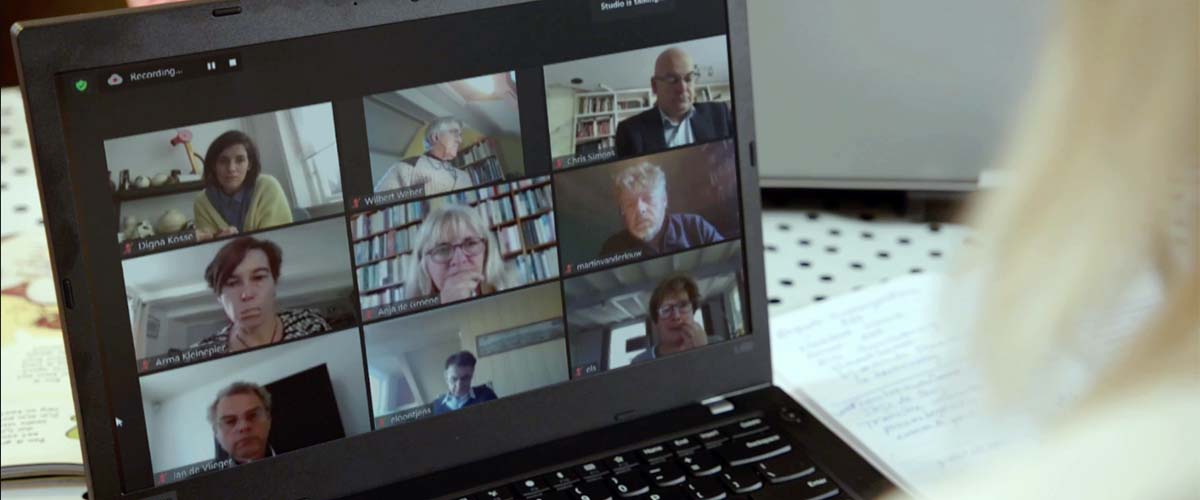Most employees are not interested in IT let alone IT Security. So simply launching a security awareness program, because it has to be, is doomed to fail. And it is actually a waste of investment. You will have to put a lot of time into the preparation, especially to prepare your employees. So communication! Make a structured plan to inform your employees. Here are some steps to make a plan.
Step 1: what do you want to achieve with a security awareness program?
Why is a security awareness program necessary for your company? If you can clarify this question in one sentence, it will help you throughout the program. Especially if your program has a multi-year plan. Check after each step whether the reason is correct. Start with the end in mind (Stephen Covey). After all, a security awareness program is only a means. What does it look like when everyone has gone through the program? Are people no longer clicked on an unknown link? Or are attachments not sent to the wrong people? Think practical and achievable goals. Start big and make it more specific so it becomes measurable. Put your most specific and measurable result in your communication plan. You can then add a feasible timeline after step 2. This way you are well prepared when asked: what will it bring? It is therefore good to determine this in advance.
Step 2: what is the current status in the company?
Now that you know what result you want to achieve, it is good to know the status of security awareness. This is important so that you have a starting point. Make an inventory of what resources are available within your company and who can help you create and implement this plan. Also consider creating an internship assignment for this.
Step 3: map out the learning needs
You may have discovered during the previous step that security is experienced differently and risk awareness also differs. A work environment has a lot of influence on this. It is good practice to make a matrix together with HR and to distinguish different target groups and needs. Describe for these (target groups) people: what their background is in terms of information. In what way do they take in information and all relevant characteristics and behavioral characteristics. This is important because you don't want people to get too easy or too difficult workouts. This is very demotivating and will not ensure the success of your program.
Step 4: how do you get everyone on board?
You are now halfway through the steps you need to take to take. When you see how much relevant information you have already collected and determined, you get the feeling that you are almost there. And so it is. Only now comes the hardest part. How are you going to inform and enthuse everyone? Now is a good time to expand your team with someone from marketing and communications. They are the specialists in getting a message across. In addition, you ensure more ambassadors. Now that you and your team are in the creative step, you can immediately see for each target group how you are going to approach it strategically. For example, do you start with an event, where you tell what the reason is and what will happen in the coming period? Don't forget to tell them what it means to them. In any case, include all the principles in determining your message and strategy.
Step 5: what are we going to use?
You will notice that you and your team can do it in the previous step have often discussed certain solutions. E-learning, serious gaming, training courses, presentations, guest speakers, intranet, internal newsletters and posters. That's not a bad thing and it often helps to have an idea of the how-question. The most important thing is to realize that everyone learns differently. Take another look at your target audiences. Try setting out a timeline for each target group with actions/training. You can then see whether you can have 1 or 2 actions/training sessions take place together per year. This not only ensures support, but also saves costs. Try to build up your program by building in more fun in the beginning. You can do this, for example, by playing a game and by doing knowledge battles. If you use e-learning, look especially at the quality. Include in the planning who is responsible for what, this will help you carry out the planning.
Step 6: what is the investment?
The last step is another difficult. How much money and time will a successful security awareness program cost? It is good to have this clear in advance and to get it approved. Because you have a good idea of what it will yield in the previous steps, it is natural to also set the investment in return. How much time will it take the employees and? What do the resources you want to use cost? If you have thought through everything well, it will yield more than it costs. However, you will be asked whether it can be done for less. Make sure you are prepared for this by being able to properly experience the impact.
Game on!
Have you followed all the steps? Then it will really help you to set up a successful security awareness program. Do you need some help? Please contact a Cyber Inc Security business consultant. Good luck!
